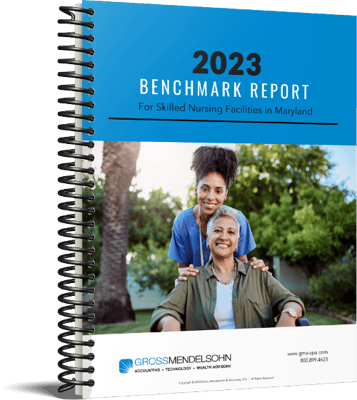Collection of receivables is one of the toughest financial challenges that a long term care facility faces. Delinquent receivables can create short-term and long-term cash flow issues — and the financial viability of your facility.
Better management of your receivables starts with an understanding of what causes collection issues in the first place.
The Impact of Medicaid Pendings on Your Skilled Nursing Facility
Most collection issues stem from “Medicaid pendings,” residents whose Medicaid applications have not yet been approved by the Department of Social Services.
Long term care facilities typically have between three and ten Medicaid pendings at any given time, each normally lasting for a period of at least six months, with many experiencing turnaround times of 12 months or more. Assuming an average private rate of $275, that’s $8,250 per month for just one resident, and $49,500 for six months. Now imagine your facility is on the high end of the spectrum, with ten Medicaid pendings. That’s $495,000 for a six-month period!
Medicaid pendings result from a multitude of reasons, but primarily because of the state’s and provider’s admissions and follow up processes. The admissions process for a new resident establishes how the collection process will work with that resident. Ensuring that all proper paperwork is received from the resident and submitted quickly to the state will allow for quick approval and payments.
Lack of receivable follow up by finance and collection staff is what makes or breaks the collections process.
For Medicaid pendings, it is important that there are established and clear procedures on the follow up process with the responsible parties of residents and with the state's Department of Social Services (DSS) to ensure that all required information has been provided and any issues are quickly identified. This will improve the management of pendings, which in turn can improve the rate of eligibility, thereby improving collections and cash flow.
The same can be said for both Medicare and private residents. I have seen many co-insurance claims go unpaid because they were not submitted timely after Medicare paid the initial claim. A private resident’s balance can grow as quickly as a Medicaid pending if appropriate arrangements are not made with the resident or family.
Collections Benchmarks for Maryland’s Skilled Nursing Facilities
In a perfect world, all resident receivable balances would be collected within 30 days. However, this is difficult to accomplish due to the Medicaid pendings and co-insurance billing problems noted above.
According to our Benchmark Report for Skilled Nursing Facilities in Maryland, industry data shows that overall collections occur within an average of 56.65 days. The number of days to collect is within expectations given that the Medicaid mix for the industry is approximately 65.54%.
It’s important to note that the statewide average experienced an increase of 8.63 days between 2018 (48.02) and 2022 (56.65). While it is difficult to determine if this trend will continue, it shows that facilities are having a tougher time with receivables and collections over the last five years. The good news is that bad debts as a percentage of receivables continue to be on the decline, indicating that while it’s taking much longer to collect receivables, they are indeed being collected. Industry data shows that bad debts as a percentage of total receivables decreased from 1.81% in 2018 to 1.41% in 2022.
3 Things that Affect the Health of Your Collections Process
There are three key factors that you should consider when analyzing the data in our Benchmark Study For Skilled Nursing Facilities In Maryland, especially when comparing your facility to others in the state or within a particular region.
-
Skilled nursing facilities have a tendency to “hold onto” their receivables, meaning they will continue to leave a resident’s receivable balance on the books long after the point of reasonable expectation of collection. (The alternative is to write off receivables that, realistically, you know you won’t be able to collect.) Couple that with not properly allowing for anticipated potential debt in your Allowance for Doubtful Accounts, your receivable balances will be unnecessarily inflated, causing an increased number of days-to-collect calculation.
The bottom line — be realistic about what is collectible. -
Finance staffing levels differ from facility to facility. Larger facilities might have more finance staff, allowing for quicker turnaround of receivables and faster follow up on Medicaid pendings and other older receivables.
- The speed at which Maryland’s Department of Social Services processes your Medicaid applications can vary. DSS employees have varying workloads when it comes to processing paperwork. This means that your claim approvals can be delayed, thereby increasing your facility’s Medicaid pending claims, the balance of accounts receivable, and the facility’s days-to-collect rate.
How Do Your Receivables Stack Up?
Are you curious how your long term care facility stacks up compared to others in the state and your region? Do you want to see how your collections have changed — for better or worse — over the last five years?
For Help
Contact us online or call 800.899.4623 to discuss how your skilled nursing facility compares to others in the state, and how to better manage receivables and collections.
This article was originally published in June 2016 and was updated in April 2024.


